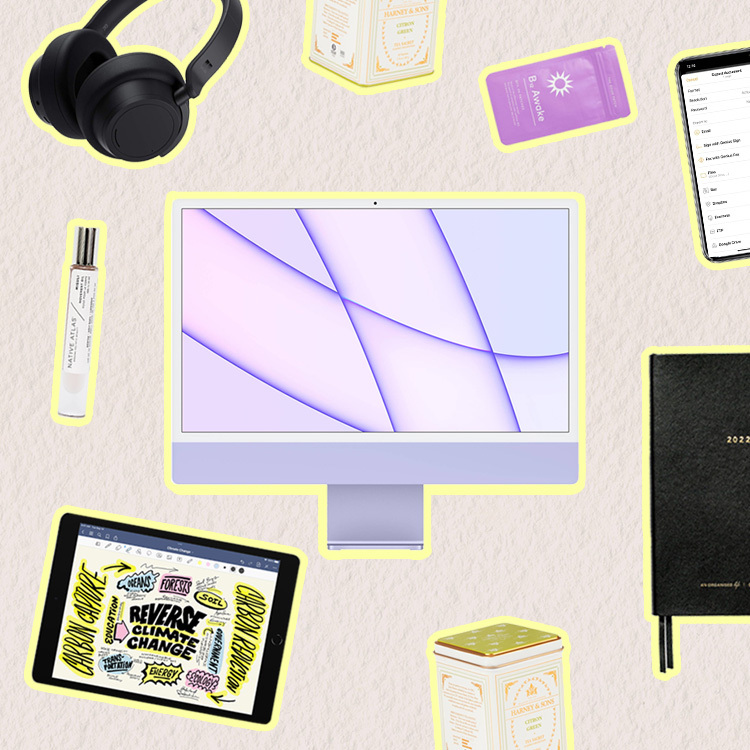Imagine this: Your full-time job is gone and you are freelancing. You can now set your own rates, schedule, and choose the projects that you work on. All this can be done in your pajamas. This sounds pretty amazing, right? It is, but as someone who’s been there and done that for quite some time, it’s also a big adjustment to make—especially when it comes to getting paid.
As a freelance writer, I work for myself and only get paid for the work that I do. Most of my clients pay me on what is known as a “per project” basis. That means I get a set amount for each piece of content that I create, no matter how long it takes. The faster I finish the project the more money I make for each hour worked and the more time it takes me to take on more work. In other words, every minute counts.
Why are you asking me this? Because I know that the more productive I am, I make more (fair enough!). I’ve had to learn some very effective productivity hacks along my journey. Your career is your success.
These are my top productivity hacks to get more done in less time.
1. I Embrace Time Blocking
First, I use the time blocking technique to plan my day. That means I will sit down and plan out my workday before it starts. I will then look at my day, plan my day around meetings and appointments, and incorporate any to-dos. I like to break down my day into four main blocks: early morning/mid-morning/early afternoon/late afternoon.
Once I know how much time I have available for each block, I can assign tasks to my to-do lists. I’m more productive when I can sit down and finish an assignment from start to finish. Even if I can only get one task done in one of my four quadrants, I plan to do so with no interruptions (I’ll share how to avoid interruptions in a minute).
I make sure I have enough time to complete the task. This helps me avoid the stop-and-go patterns that can lead to a task taking longer than it should. I also make the most of idle time, such as between meetings, by scheduling faster tasks like responding to emails.
2. I Plan For Breaks
When I do my time blocking, I don’t jam-pack my day full of assignments. It’s tempting to fill that space with to-dos, but I find it easier to focus on the tasks once they are started and get them done in a timely fashion.
I don’t feel guilty about taking breaks. I take a few walks each day and always have a solid lunch break. By planning for a break and knowing it’s coming, the break feels more purposeful and less like wasted time. A real break, not just scrolling through Instagram, helps me clear my mind and makes it easier to tackle cognitively challenging tasks when I get down to them.
3. I block email and social media
Remember those distractions that I mentioned earlier? Here’s how to get rid of them. It’s not a secret that email, social media, texts, and phone calls are major sources of distraction. Because I service many different clients, it’s very hard for me to ignore an email or Slack message once it comes through. I want to provide excellent service and be available whenever needed. However, I find it difficult to finish a task with out being distracted by all the little things that happen throughout the day.
A study by University of California IrvineIt takes on average 23 minutes and 15 seconds to get back to the original task after interruptions.
While I don’t think it was taking me quite that long to get back on task, I did find that I worked slower after getting back to my task than I did pre-interruption. To reduce distractions, I close my Slack and my inbox once I have started a task. I also moved my phone into another room. Once the task has been completed, I can then check all my alerts and address them all at once (shoutout for batch working).).
4. I will try batch working
Batch work is about not switching between tasks. This makes it easier to complete them quickly and without making mistakes. I like to combine similar tasks as much as possible. I might, for example, research all the articles I need to write in the same time block or create all my invoices for the month simultaneously. Batch work is great for smaller tasks that can clog up your workflow, but must be done.
5. I Touch It Once
I use the “touch it once” method as often as possible. This productivity hack is primarily applicable to managing your email inbox. Instead of opening an email, skimming it, marking it as unread, and then coming back to it later, I try to just “touch it once.” What this means is that I respond and kick off next steps immediately.
Let’s say I receive an email from one of my lovely editors at The Everygirl with an article assignment. After I have read the email, I will add it to my calendar as well as to my to-do lists. If I need to secure an interview for the story, I’ll send out that request right away to get the ball rolling. The editor will then respond and confirm that I can take on this story. I archive the email. That’s it.
Touching it once isn’t always possible, but it’s helpful to do it as often as possible to avoid spending more time on emails than necessary.

6. I Listen to the Right Music
Although I love listening to music while I work, it can be difficult for me to write when they are singing other words. When I have trouble focusing, I turn on the music. Brain.fmIt really works. This lyric-less music is meant to help you focus. However, you can also listen to mellow classical music to achieve the same effect. I prefer to choose between the 30- or 60-minute sessions to see how much I can accomplish before the music ends.
7. I took control of my meetings
I—like everyone else on the planet—attend way too many meetings each week. To be more accommodating, I used the opportunity to give any time I was technically available to take calls when scheduling meetings. The result? One to two meetings a day at random times that caused a lot of stop and go, not to mention I found myself having to get camera ready every day, which I can’t bill for and which majorly ate into my productive working hours.
I began the year with a fresh approach to meetings in January. I created a Calendly account, which allows me to specify which days of the week and at what times I’m available for a meeting. Not only does it save me a lot of time and effort in scheduling meetings, but it also allows me to block out time for work. I am a morning person and it’s much easier for me to write in the morning. I find it difficult to get back into the swing of things after a day of meetings. Now I schedule my mornings for deep work and meet with clients in the afternoon. This requires less focus. Whenever possible, I also try to batch my meetings together and schedule them back to back so I don’t have weird gaps of time in my schedule.

Source: The Every Girl
